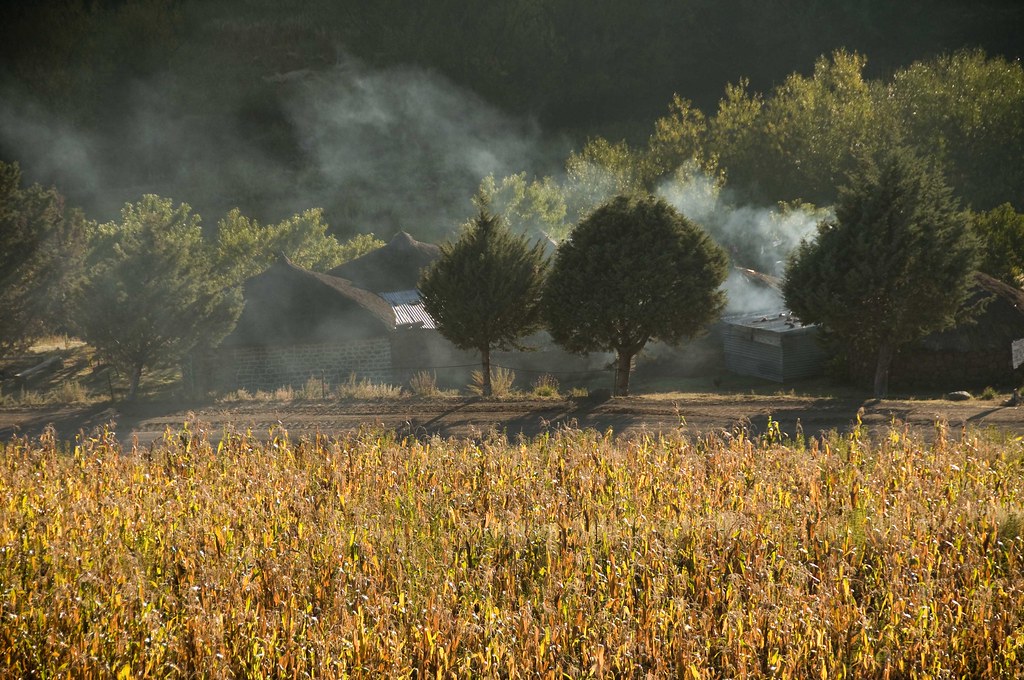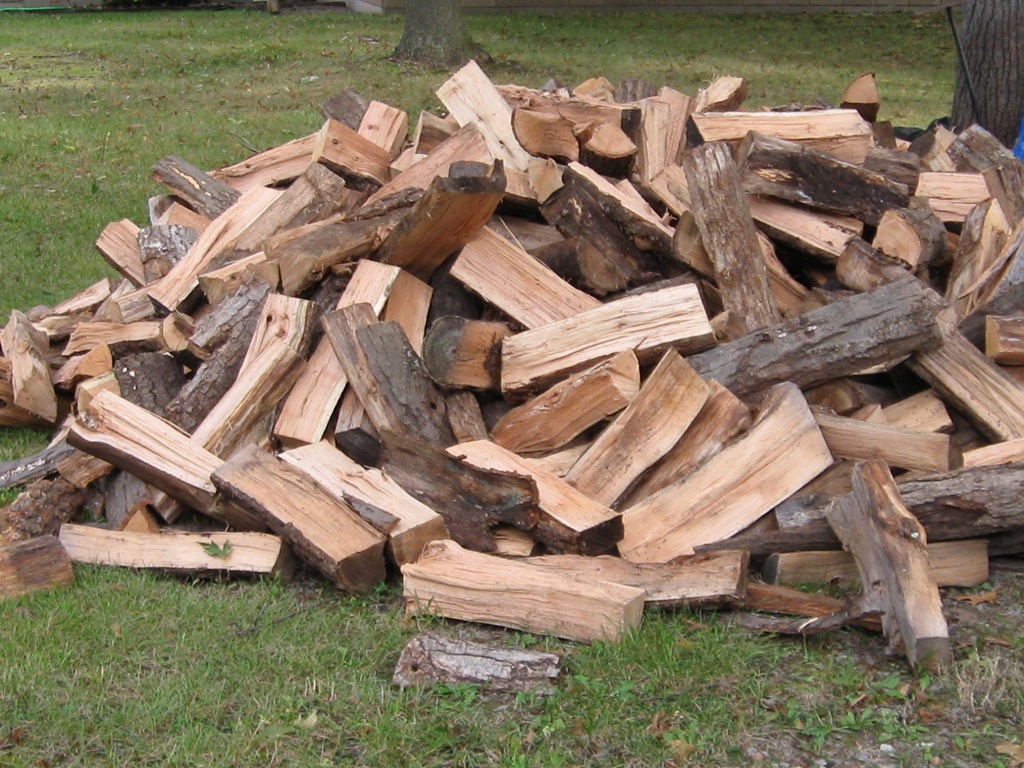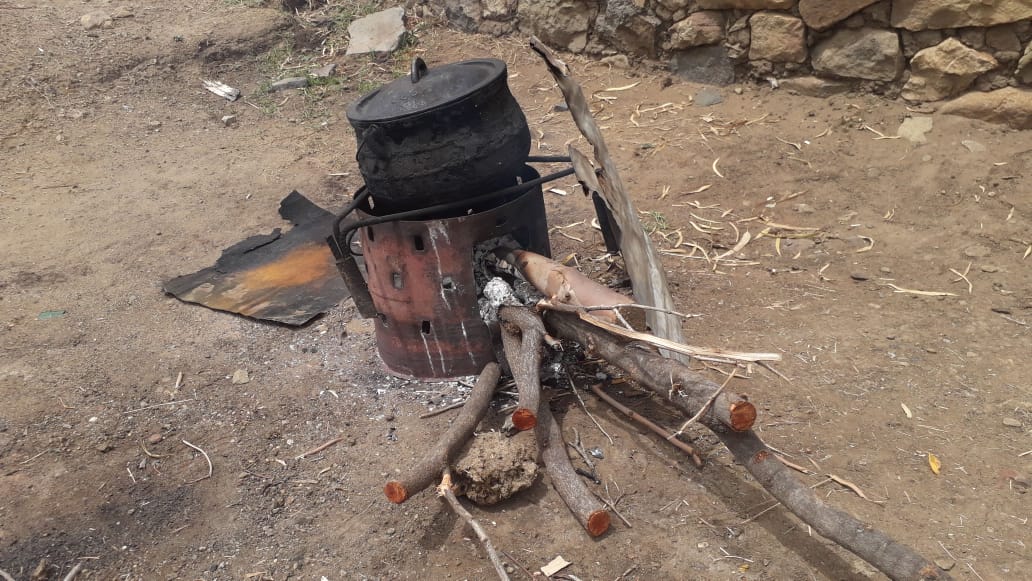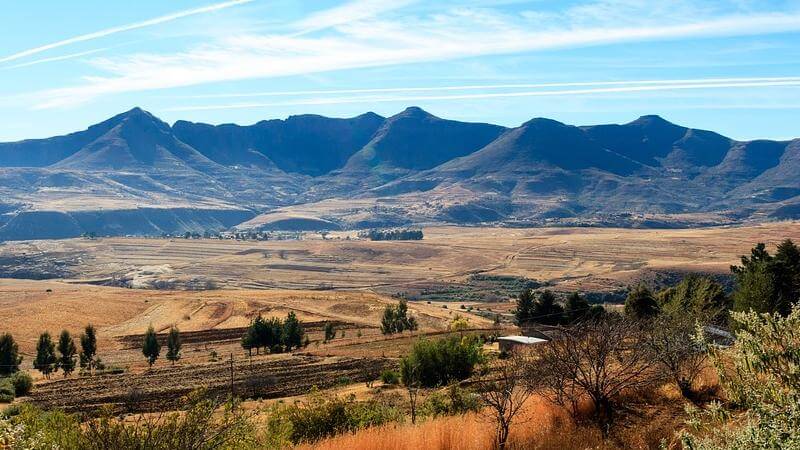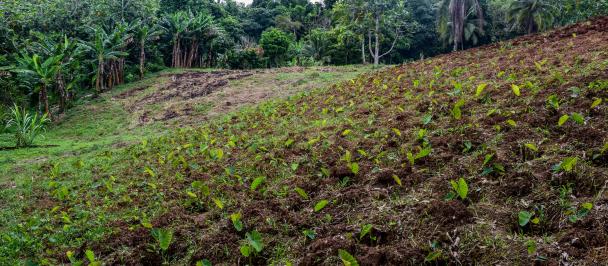The need to protect our planet from ourselves is increasingly becoming an urgent call for mankind. The forests have an increasing list of benefits to humankind; and these have become even more important in the wake of deteriorating climatic conditions, land degradation and increasing food insecurity. Since the beginning of creation, trees have furnished us with two of life’s essentials, food and oxygen, and additional necessities such as shelter, energy through fire wood, medicine, and tools
The Lesotho Accelerator Lab made an astonishing discovery during the recent Solutions Mapping exercise in Mafeteng District ,in the south of Lesotho, some 77 kilometres from the capital city, Maseru. People in this region believe that ‘desertification attracts aid’. Villagers confirmed that they had previously been overlooked and by-passed by community development projects/assistance due to their well-managed habitat.
Off development aid and community development: living in Mafeteng
Almost every single household in one of the villages in the Kolo region had a large stack of firewood; seemingly uncommon in other parts of the district. While most households depend on firewood for cooking and energy sources, the stocked quantities in Kolo were abnormally high. The first question that came to mind was whether people in this region had the requisite purchasing power to finance acquisition of firewood to last the entire year.
This notion is totally negated, when scanning the economic situation in the village. A considerable fraction of the people in Kolo depend on revenue mainly from South African mines as well as bi-annual proceeds from the wool and mohair for their livelihoods. Some households depend heavily on remittances from family members in diaspora, mainly those working in South African farms or as domestic workers and in country textile industries mainly found in Maseru capital and Maputsoe. These income sources have declined drastically in the past two decades, exposing the villagers in Kolo and majority of Mafeteng district inhabitants to poverty and other socio-economic vulnerabilities. Income earned from some of these activities is below the minimum required for an average household of 5 members in Lesotho (less than US$112.00).
“Where do you get so much firewood”…? Asking one of the villagers in a relaxed conversation, opened an alarming revelation. “It is very easy for us…some families own a patch of trees which we can cut anytime as need arises…but, one of our village leaders encouraged us to continue cutting these trees because donors bypass our village with development projects because they believe that life in this area is much better than in bare areas”, bluntly says another villager.
Some villagers bluntly pointed that for them to be considered for aid, they opted to cutting off trees to create a vulnerable outlook. In Lesotho, forests could be owned by individuals, families, communities, private co-operatives, corporations and other business entities
The issue of intentional deforestation or risky behavior to attract aid is not new in Lesotho; the same behavior exists in other parts of the country. In the Mokhotlong District some of the villagers complained that pine trees destroyed rangeland and therefore they are better-off without them – they therefore cut - the trees. In other areas, i.e. Ha Mabote in Berea district, trees were felled due to increased community crime and that criminal acts and perpetrators were harbored by these woods. In the health sector, the rumor mill has it that people deliberately put their lives at risk of contracting HIV to be considered for food parcels and other social protection packages for PLWHAs. Other communities in Mohales’s Hoek remove stones used in reclaiming eroded gullies (Donga’s as they are called in Lesotho), so they can replace and re-fill the same tracts of gullies and be paid under the government sponsored fato-fato. Incidence of perverse incentives, where aid has created a negative outcome instead of the planned/desired positive one, has become a common dilemma in the development work in Lesotho.
Deforestation in Lesotho
The question of saving trees does not necessitate a ban on use for daily needs. The purpose of this blog is to create platforms for conversations on the issue in the wake of conscious deforestation. ‘Lesotho is one of the least forested (0.26%) countries in Africa’, and is losing a lot of topsoil to erosion and other climate change effects. Tree cover in Mafeteng is estimated at 459 hectares, and at least 1% is lost to deforestation every year, since 2000. This blog seeks to advocate for sustainable use of forest resources and answer questions such as the number of trees planted per annum to offset the deforestation. Sustainable use could include supporting natural regrowth, controlled burning, replanting after cutting, enrichment planting etc.
A change of mindset is not an overnight Santa gift but a long term call for positive change. As a mitigation measure, promoting education for land and forest conservation, energy efficiency and stewardship for environment would be necessary to maintain continued benefits from trees, as well as promote regeneration and sustainability. This would ensure a deeper rooting of the consideration for the planet habitual planting of trees for us and future generations.
Local and other solutions for reducing deforestation
The Government of Lesotho and her partners have made considerable investments in tree planting, promoting rangeland management and conservation. However, there is a huge disincentive resulting from economic conditions within the communities, which is promoting the conscious deforestation. A careful review of different programme strategies and policies would be required to ensure ecological sustainability and conscious afforestation as well as achieve the set national target of achieving 5% tree cover by 2020 by planting 1,500,000 trees a year (target that seems to have been missed).
Some of the observed and historical solutions for reforestation and afforestation include:
· Policy and institutional solutions:
o Lesotho ‘National Tree Planting day’ which was a dedicated public holiday on the 21st March, for planting trees, inspired by the first arrival of Europeans in 1833. This resulted in some of the largest trees in existence today, from the former woodlot project which was run from 1973 to 1987. This project also supported training Basotho as foresters. Abolition of the holiday has resulted in a negative culture to afforestation.
o The Government also enacted the Forestry Act of 1978 to support the development of woodlots project which was followed by the creation of Forestry Division within the Ministry of Agriculture.
o The Government further established a Ministry of Forestry and Land Reclamation to promote forestation and range management.
- Community behavior and social change
o The Philippines have introduced a Graduation Legacy For the Environment Act which requires all graduating students from elementary school to college to plant 10 trees each, before they can graduate ‘to cultivate a culture of socially responsible and conscious citizens’. This policy’s revolution is one of the most applauded actions for climate of the 21st century.
o Use of fuel-efficient cook stoves use minimal firewood and are used by some villagers in Lesotho. Could this minimize the excessive use of firewood for cooking? Extending access to energy saving mechanisms is one of the strategies in the national energy sector agenda.
o To promote economic activity and culture for protecting biodiversity, Eden Reforestation Projects (in Nepal, Madagascar, Haiti, Indonesia and Mozambique) have planted over 265 million trees through community action
o The tree-nation has adopted different programme strategies consistent to participating countries for planting fruit, fauna and traditional medical trees to provide long term economic and food security within the communities.
What policy considerations can we employ? What could be the strategies to reversing deforestation in our communities? How else would communities promote afforestation and reforestation?

 Locations
Locations